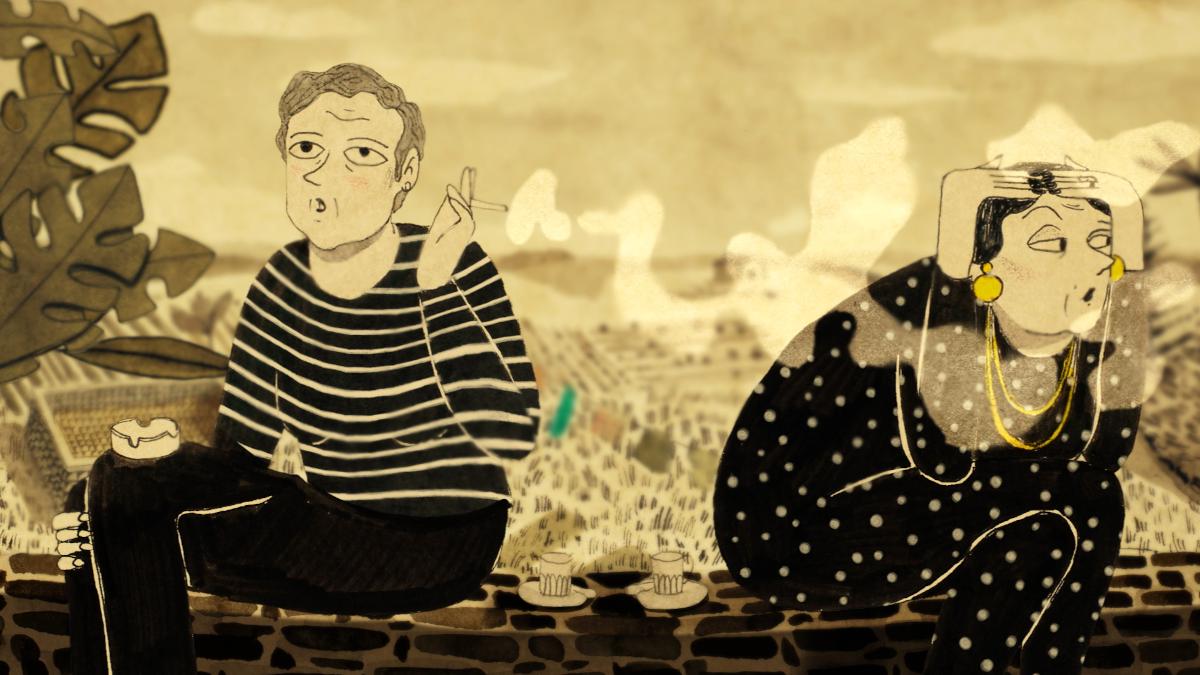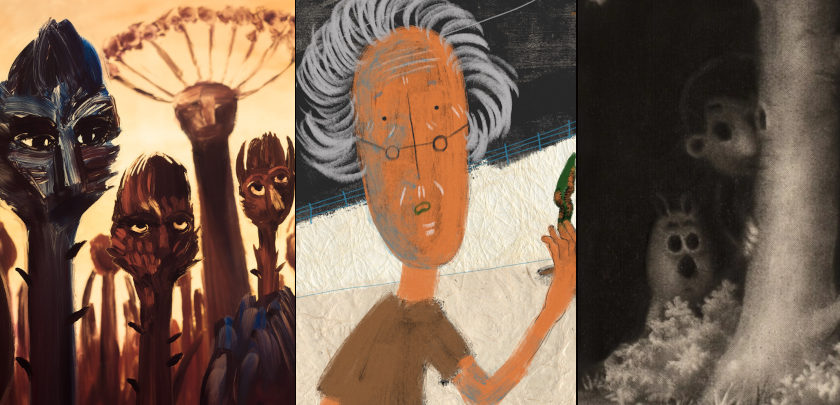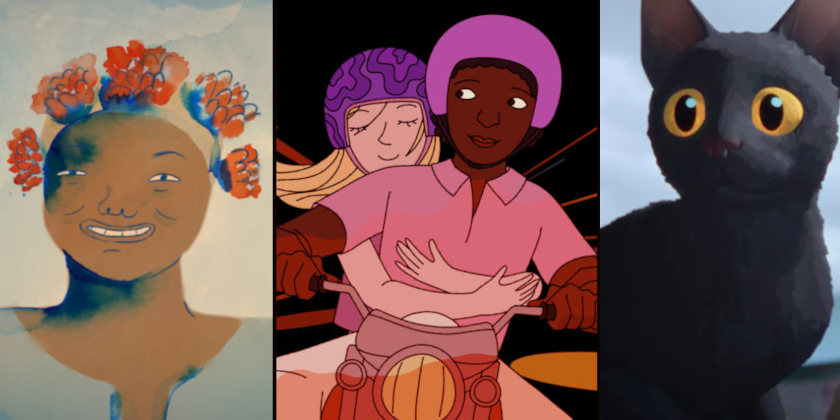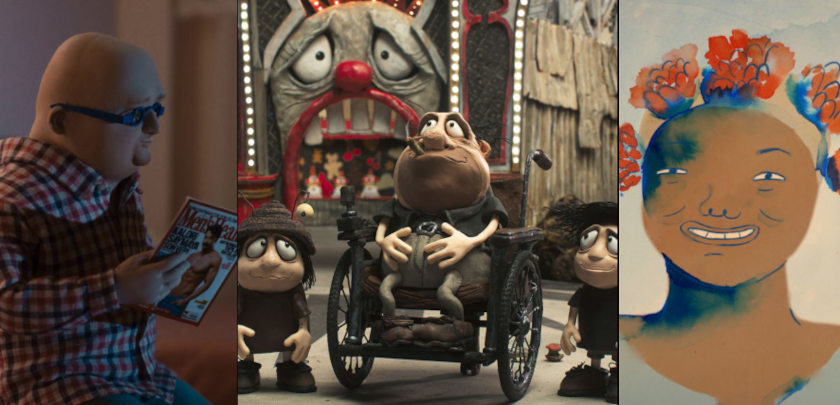Garbage Man, The Memories of a Family: Interview with Laura Gonçalves
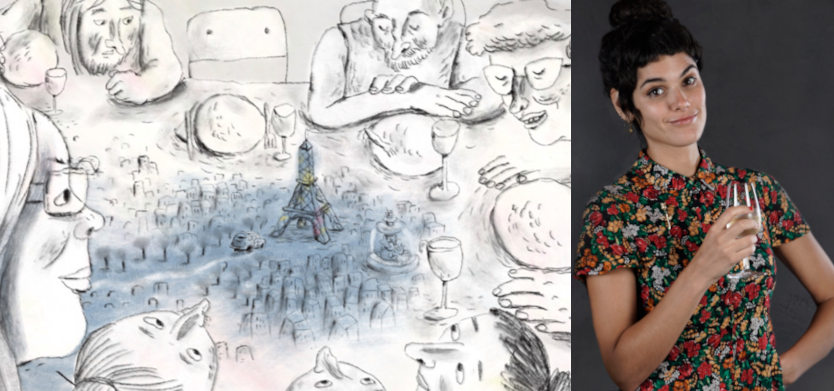
Laura Gonçalves (BAP Animation Studio) is the winner of both Animafest Zagreb (Grand Prix) and Monstra for her animation short 'The Garbage Man'.
On a hot August afternoon, the family gathered at the table remembers uncle Botão: the Colonial War, emigration to France, where he lived and worked for thirty years as a garbage man. Memories of each are crossed to tell the story of a man who lived a hard life through humor and fantasy, like when he returned to Belmonte, in a van full of trash, turned into a real treasure - Film Synopsis.
Watch the 'The Garbage Man' trailer:
ZF: A question arises: How did the idea of talking about your uncle come about?
LG: The idea of developing a film about my uncle came from a desire to know more about his history. Many memories come up during family gatherings, about him, despite his having died more than ten years ago. I have always found this phenomenon of repetition fascinating and the joy that these memories arouse. In addition to the desire to reproduce this moment of memory sharing in animation, his own story is interesting because it is a representative history of thousands of Portuguese. So, from a personal and family vision to a socio-political context of then, my uncle's story is also the same lived by those who lived through the harshness and oppression of the Salazar dictatorship, the Colonial War. And also the great wave of clandestine emigration of the 1960s.
My childhood memories of him started when he worked as a garbage man in France. During the summer holidays, he arrived in Belmonte with a van full of objects he collected from the garbage: washing machines, musical instruments, bicycles, wigs, dentures, lamps, watches, and toys. To give to family, friends, or keep in his collection. Things which, with unusual dexterity, he repaired and transformed into other things.
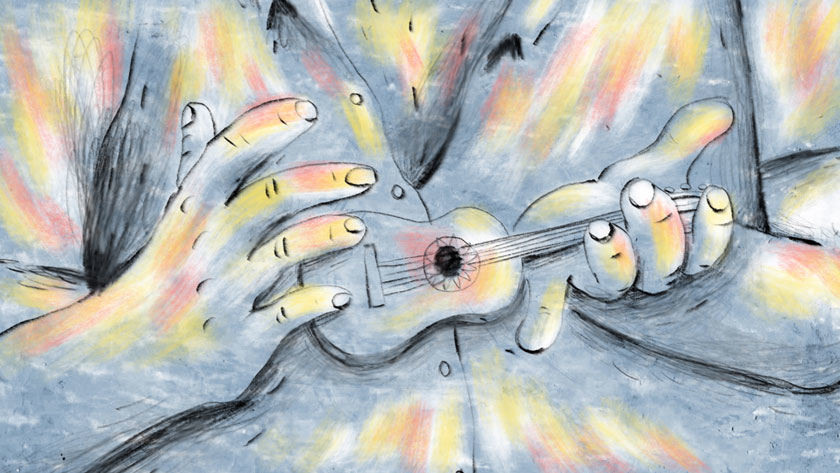
He is, in fact, a hypnotic figure who attracts children and adults, who have fascinated me since childhood with this magical side of transforming garbage into treasures. Thus, he was living between two countries so close, with such a disparate socio-economic gap, his sensitivity in taking what others throw away in an economically fed country and giving it to those who need it in a country that has just emerged from a 40-year dictatorship.
Another thing that inspired me was the desire to represent my family with their memories, putting them in the same room in the same universe. One of my favorite shots is when my aunt hugs him inside the portrait. It is a strong image that means a lot to me, and animation makes it possible.
ZF: What inspired you to develop this work besides the theme itself?
LG: As a filmmaker, I am particularly inspired by the idea of giving voice to people and personal stories that would otherwise not be heard. There is great power in the "real" voice that tells personal experiences. And I am interested in exploring these realities through the expression of animation, the use of the moving line, and painting to represent more abstract moments, feelings, experiences, and traumas, dream situations.
In this way, animation has so much potential for expressing situations that everyone in the world can relate to, even if personal.
ZF: I see that the film voices all come from your family. How were this process and the participation of all these people made possible?
LG: The presence of my family's voices has always been one of the fundamental pillars of the whole project. Actually, the entire narrative is based on the different moments they share. I spent three years before I got the financial support for the film, recording conversations of my family together at the table and doing individual interviews about different times of my uncle's life with each family member. Over time, I would lock myself in a room with one, two, or three of them and start recording. It was a very homely and informal process of conversation, where one memory links to another. It was natural because they repeated these stories so many times, but there were also darker subjects, which were more challenging to talk about, like the war and the illegal journey to France by "Salto"*. They dedicated a lot of patience and trust throughout this process, which I am really thankful for.
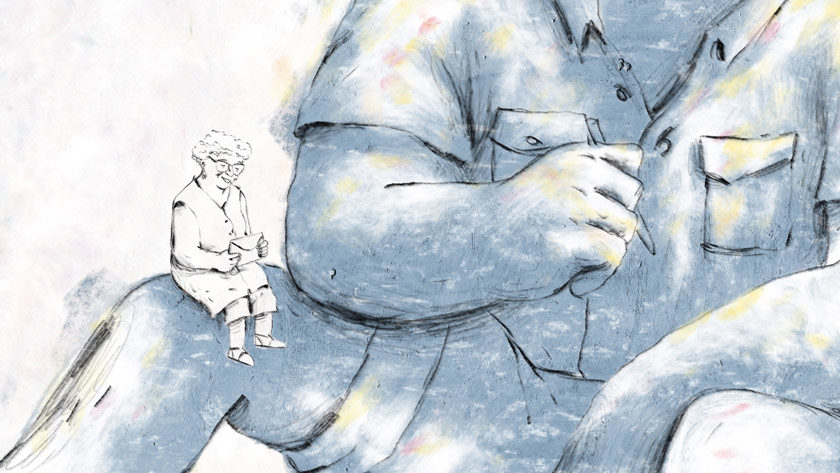
After having all these individual recordings, the challenge was to simulate the conversations happening at the table. This sound editing process was exciting and natural because the dynamics are based on our reality at the table. It was a very intimate process because I spent much time with my family while making the film, and learning so much about my uncle's life, left me deeply fulfilled.
* A clandestine rote to escape abroad from the Portuguese dictatorship.
ZF: Could you explain how did the production process go along (with BAP producing)? You had some support from Abi Feijo as well.
LG: Rodrigo Areias and Bando à Parte produced the film, which was made at BAP Animation Studio. This film also had the happiness of being helped in different stages by different entities, besides the financial support from ICA. There was the participation of the Multimedia students from ESAD, that kindly helped create the foley for the film, which the sound designers used to harmonize all the environments. Another essential support was during the sound mixing process made by Vasco Carvalho in Católica School, which has always been a significant part of our films in BAP Animation Studio.
During the pre-production, I also had the possibility of being part of the Residency of Casa Museu Vilar, hosted by Abi Feijó and Regina Pessoa, where I worked on my first drafts of the animatic. Their patience, devotion, and kindness in this period meant a lot and helped me overcome several formal concerns. A lot of months after (due to the Covid 19, we didn't saw for a while, and there were some challenges to the production process), I came back to finally show them a very close to the final version of the film, and their feedback was extremely helpful to close it up, so I am overly happy and grateful for having their support on the film.
ZF: How did the construction of the narrative (divided into verbal and visual terms) take place?
LG: Firstly, there was the construction of the sound narrative. It was based on the interviews to create the family dialogue that defined the order of events. This whole narrative takes place in the present. Secondly, the work on the visual narrative, adding the visible universe to what is being presented. At this point, it was vital to visually distinguish between the past, the present, and a dreamlike present, which includes the monkey's appearance and uncle characters at the table, either by color or camera movements that assist the spectator in this journey.
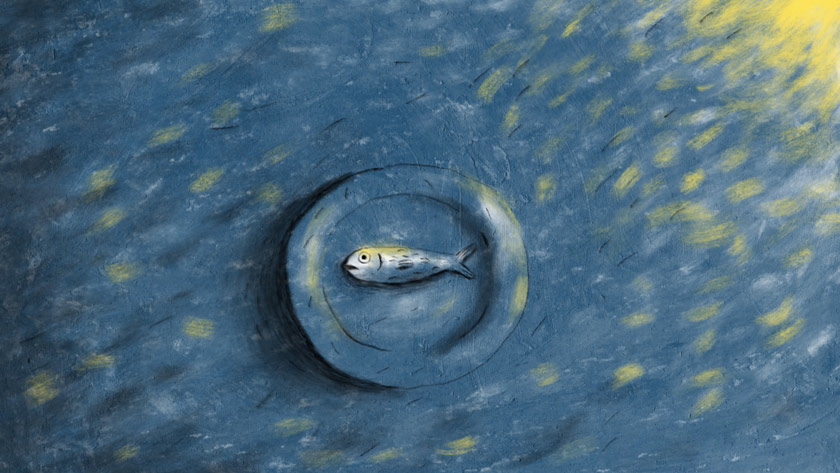
After these two narratives had a solid foundation, it was possible to play and add more visual and sound elements that added layers of interaction between the present and memory, what "is" and what "was".
ZF: You present the story using two kinds of cameras, being in motion and static. I notice the camera in motion a lot in Portuguese animation films. Would you have an explanation for this, having your film as a reference? ;)
LG: In the case of films based on a "factual" environment, the camera movement helps to absorb the spectator into a specific space and make him feel he is there, traveling through space.
The movement allows us to show many things quickly and place the spectator in that space. In a time-limited format such as a short film, it is crucial to have symbolic language and metaphors that allow us to arrive at an idea faster - camera movement helps significantly in this regard. On the other hand, I am fascinated by talking heads, and I wanted to make a film full of people looking at the camera and expressing themselves using traditional animation. This film balances out a bit because it has these two extremes of visual language. In the case of 'Homem do Lixo', the camera movements also serve a purpose of mobility between times - leaving the present and going into memory, or vice versa.
ZF: The image as a representation is delimited by the drawing trace. And I have noted that the line is predominant in your works. Could you tell us a little about this preference and how you developed it in 'The Garbage Man'?
LG: The presence of the pencil in this film comes from a personal link to my first short, 'Three weeks in December', based on recordings of several moments with my family in Belmonte during Christmas. The entire visual concept is represented through the rapid line of the sketchbook drawing, capturing specific moments in time. It's the line I use in my graphic diaries and the best way to express my observation work. That allows me to capture movements, and silhouettes, defining physical characteristics more quickly at any moment or situation.
Therefore, the use of representation delimited by the line predominates in my authorial work, although I am also very interested in its mixture with other languages. In this short, the present monochromatic contrasts with the past's memories, which live on the dance of spots and vibrant colors.
In the next film, which will be co-directed with Alexandra Ramires, the use of line will be present alongside the liquid stain of watercolor.
Watch the making of 'The Garbage Man':
ZF: I found the transitions from one scene to the other very interesting, without cuts (I do that too)—more colorful and less colorful moments. Since there is also narration to guide the audience, how did you achieve this linking of image and sound? (Since you state that the verbal narrative was defined before the visual narration).
LG: There is an authentic voice that the whole visual part follows. Therefore, the visible world was built based on the concept of the present time and was represented by a monochromatic tone based on the pencil. And the pasted memories are illustrated by vibrant color in pastel painting. The camera movements without cuts help create a smooth transition between these two worlds. As a result, as it goes from one memory to another, it appears as though everything is connected, with no apparent break between the beginning and the end.
ZF: Thank you, Laura, for sharing part of your life with us.
Film Review:
I could not help but recall films like 'Table' (João Fazenda, 2020), and 'Sunday Lunch' (Céline Devaux, 2015). However, I think Laura's animation stands out for the socio-political context she develops in the story, which covers almost three decades. Moreover, it is very touching how situations of hunger and immigration are presented delicately, without ceasing to be explicit to those who are sensitive to these moments.
The almost "naive" way the director introduces us to part of her family's history is actually the result of accurate work in constructing the audiovisual narrative. That can be better understood by reading the interview above.
The color comes from memories, despite the difficult moments that are presented. It is exciting when animation is used to represent real moments, more embodied by someone's memories, by their emotional and not necessarily objective information. There is always a personal interpretation, which in animation is more explicit, as in Laura's film, which is also a documentary record of the emotions experienced.
The animation fluidity, with "sequence shots" and the fusion of past elements with the present, illustrate her memories. An example is the creative use of the little monkey as a multi-dimensional element that transits between these two levels of the narrative ("real" and imaginary).
Laura Gonçalves' film is one of those films that, after watching it, we realize how rich and fulfilling life can be, even without money, power, or fame. 'The Garbage Man' shows us the real story of a simple man, who faced in his own fashion, the dictatorship, the hard years of scarcity leaving his country, and the Portuguese Colonial War, besides being a "Recycling Man". Someone who took reusable products from the garbage, fixed them and gave them to his family and friends. His personality stayed in his niece's memory, who gifted us with this animation. Furthermore, now he is in our memory, too.
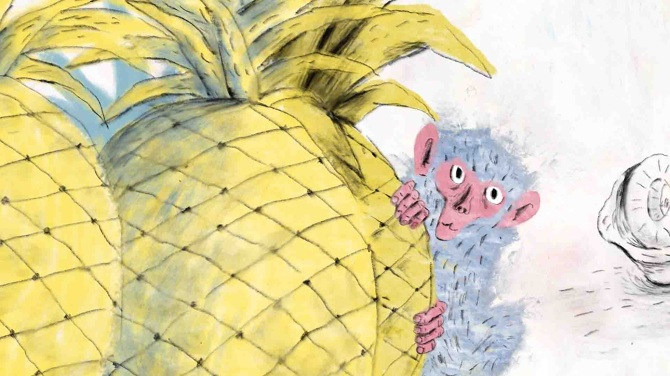
CREDITS:
The Garbage Man, 2022
Production: BAP Animation | Distribution: Agência da Curta-Metragem CRL | Animation Techniques: 2D drawing digital animation, Digital painting
Direction: Laura Gonçalves | Script: Laura Gonçalves | Music: Santos Rocha | Background Design: Vasco Sá | Layout Design: Miguel Lima, Vasco Sá | Animation: Inês Teixeira, Marta Reis Andrade, Alexandra Ramires, Vitor Hugo Rocha, Maria Francisca Moura, Dimitrije Mihajlovic, Laura Gonçalves | Painting: Martim Cordovil, Patricia Guimarães, Diana Peixoto, Vitor Hugo Rocha, Maria Francisca Moura, Dimitrije Mihajlovic, Laura Gonçalves | Compositing: Maria Rosa Figueiredo, Conor Flanagan | VOICES Beatriz Botão, Carla Botão, Anabela Botão, Nuno Botão, Rui Botão, Manuel Barroso, Humberto Barroso, Jorge Barroso, Serafim Barroso, Lurdes Gonçalves, Dario Gonçalves, Laura Gonçalves | Sound Design: Pedro Marinho, Bernardo Bento | Producer: Rodrigo Areias
About Laura Gonçalves
Laura Gonçalves completed the Art and Multimedia course at the Faculty of Fine Arts, Lisbon, in 2009 and entered the world of animation as a finalist and animator at the Sardinha em Lata studio. In 2012 she made her first animated short, 'Three Weeks in December', completing her Master's in Animation at Arts University Bournemouth. The following year, she moved to Porto, where she started working as an animator and painter at the production company Bando à Parte. In 2015, she co-directed the short film 'Nossa Senhora da Apresentação' (Our Lady of the Presentation) with Abi Feijó, Alice Guimarães, and Daniela Duarte, produced by Curtas Metragens C.R.L, and 'Drop by Drop' in 2016, as she co-directed with Alexandra Ramires (Xá). Nowadays, she currently works at BAP Animation Studio, one of the founding members, where she made her latest animated short, 'The Garbage Man", a production of the Studio.
Garbage Man had its premiere at Animafest, World Festival of Animated Films Zagreb, Croatia, followed by an Annecy Festival screening.
contributed by: Eliane Gordeeff




